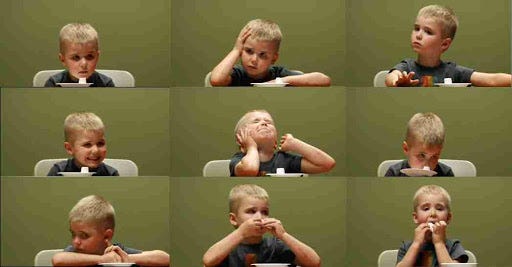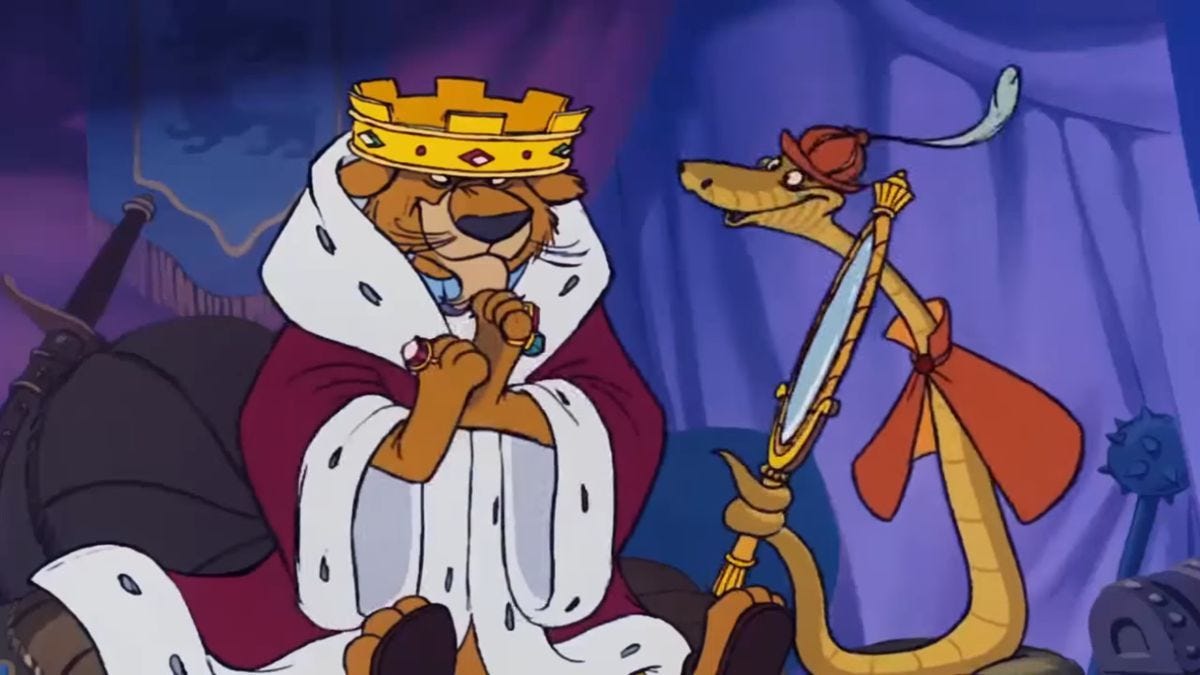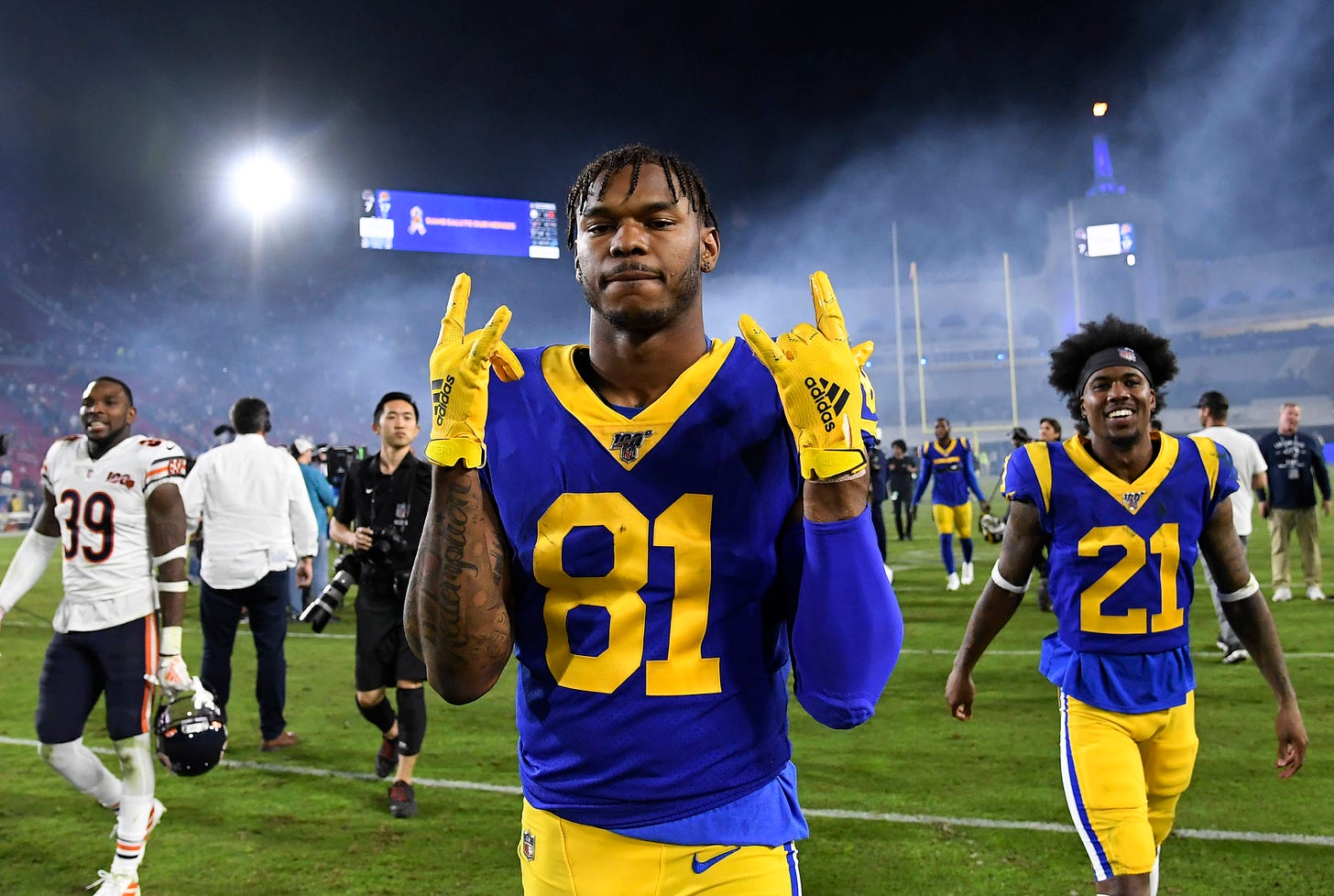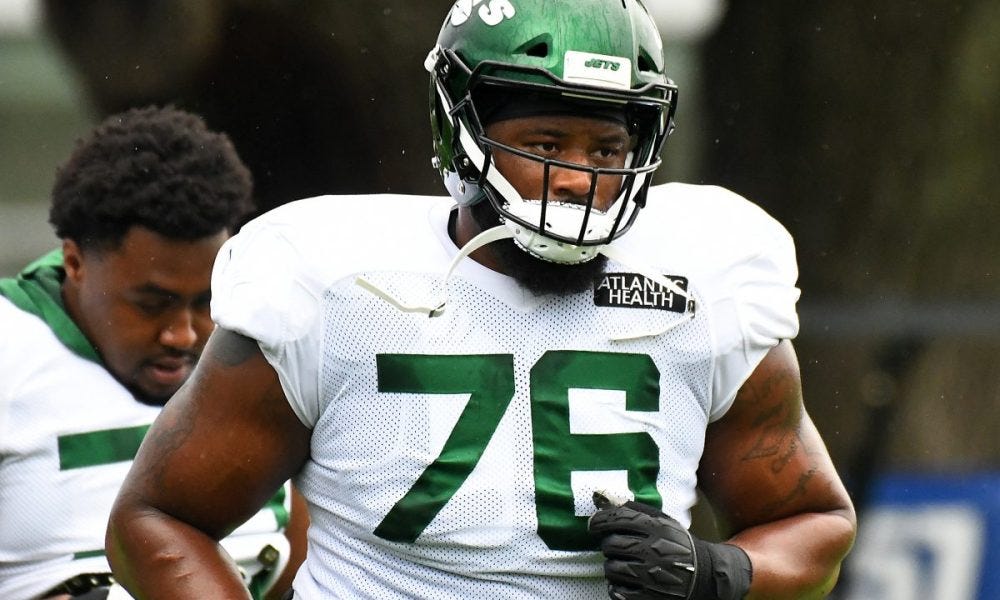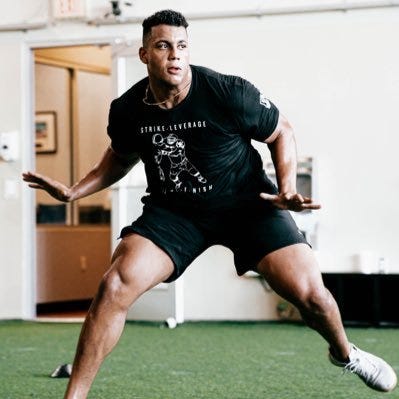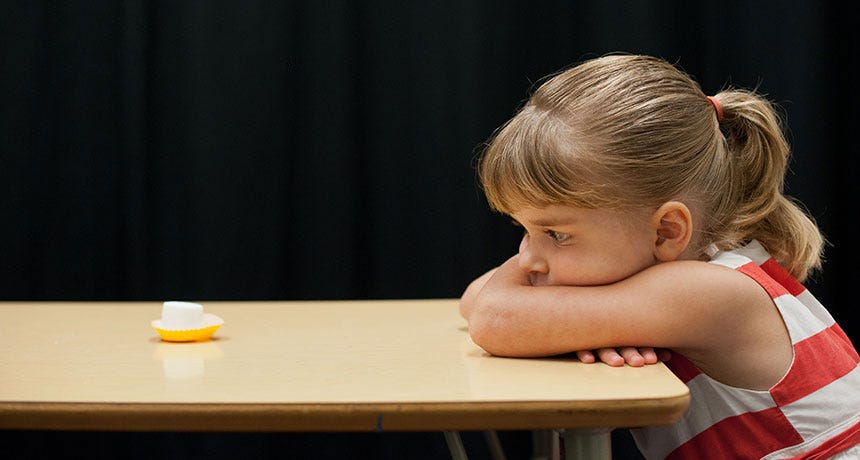The Stanford Marshmellow Experiment
In Which Delayed Gratification Yields Better Results
1972, researchers at Stanford University conducted an experiment on the concept of delayed gratification. Today, it is famously known as the The Stanford Marshmellow Experiment, and the studies showed that children who were able to wait yielded better results in school and on into adulthood. While the effectiveness of the study has been scrutinized, it stands as an example of how delayed gratification pays off in the moment with compounding gains later in life.
What the hell does this have to do with the Jets free agency?
As offensive lineman and after offensive lineman went off the board at the start of the legal tampering period of free agency,it was getting a little hairy around JetsTwitter Monday afternoon. I am not being hyperbolic when I say that people were freaking out. They were losing their minds.
It was kind of amusing and sad and cute all at the same time.
Would the Jets be materially better if they signed Joe Thuney? Of course they would be. If you were Joe Thuney and you could take top money AND go play with Patrick Mahomes, would you do that?
Of course you would.

I wrote about this at length yesterday. Overpaying for someone else’s leavings is not a wise long-term strategy. In fact by doing so you are actually de-leveraging your own later round draft picks because you are providing more compensatory picks to the teams that let them walk and which you just overpaid for the right to do so.
For bad teams, free agency becomes a “tax on the poor” type problem.
Winston Churchill was once famously quoted for saying that “I never ‘worry’ about action, but only about inaction.”
This is ironic for anyone who watched The Crown and watched Churchill become completely paralyzed about what to do during the London Smog of 1952.
It seems that’s how Jets fans felt late into the afternoon on Monday. One fan in my timeline loudly cried that the Jets should “SIGN SOMEONE” to which Sean McCormick answered with his usual wit.
The truth was that those fears of inaction were unfounded. The Jets were finding a complimentary receiver, chasing down and edge rusher, and creating some room around their CJ Mosley issue.
I will write a summary of the first few days of free agency over the weekend, but before we dive into tight ends and offensive linemen in this article I’ll say that I like the signings that the Jets have made so far. From a football perspective they are really solid additions to the team, if a little overpaid. Corey Davis can be the Robin to Mims’ Batman, Carl Lawson will add an element to Quinnen Williams’s game and vice versa, and Jarrad Davis gives them leverage against CJ Mosley should they require it.
Free agency isn’t done, but it points to the Jets being flexible at the end of the first and second rounds of the 2021 Draft. Expect them to make more additions to the offense either via the line, a bellcow running back, or a stretch-z type receiver in the 20s-60s.
This morning, I’ll buzz through what I wish the Jets would be doing in free agency, with this article focusing on offensive lineman and tight ends.
Tight Ends
tldr; The newly implemented LaFleur/Shanahan-derived system should prize tight ends with run after the catch ability. This might not be something the Jets have the resources to sustainably address for the long-term in 2021.
System: The scheme requires versatility and so the team should be looking for tight ends who are big enough to stay in and block or with enough speed and versatility to add yards after the catch. If the receivers are routinely working past the sticks because that’s what the scheme calls for, then there might be more space underneath for tight ends who have the elusiveness to avoid some tackles and truck a defender or two to get to the first down marker.
Roster: I have been wanting Chris Herndon to put it together for a few years now and it just hasn’t happened. I don’t blame Herndon much because Adam Gase is dumpster fire personified. The Jets still have Herndon under contract, so maybe this is the year he puts it together for a full season? Herndon clearly has the size and elusiveness; will a QB upgrade and a better offensive scheme be enough to lift him out of the wastelands? After Herndon, Ryan Griffin is a solid backup and fill-in player, but the Jets should be looking to add talent to compete with this group.
Free Agent Clickbait: With one of the premiere YAC monsters of free agency — Jonnu Smith — making his way to the Patriots (dang!) Hunter Henry was the best player still available until Bill Belichick scooped him up to go with Smith. (lol wut?)
Henry has been a top ten player in terms of opportunity, but his efficiency has been underwhelming while in Los Angelels. Henry has talent, but during his career he might have been propped up by a fading Philip Rivers and the surge of the rookie Justin Herbert. More than likely we will see whether it was Henry or his quarterbacks wherever now that he’s in New England.
Better Bargains: While I am sad about Jonnu, Henry isn’t the prize of Tuesday’s push. That honor falls to another Los Angeles based tight end. While he is a little undersized at 240 pounds, Gerald Everett (LAR) has the insane athleticism and “tremendous upside” which can lead to the yards after the catch production that this system craves. Los Angeles is clearly moving on from Everett in favor of Tyler Higbee which makes no sense to me. Good luck with that, Rams.
Looking to April: While I love his profile, unless the Jets were to trade into the latter part of the top ten there is no chance that they get someone like Kyle Pitts (Florida). If the Jets are interested in adding an offensive weapon at tight end, then they should look at doing so on the second or third day of the draft with names like Pat Freiermuth (Penn State), Brevin Jordan (Miami), or Hunter Long (Boston College) the top candidates who seem ready to step in and start.
Offensive Tackle
tldr; The Jets already have one of these spots locked down with Mekhi Becton on the team, but George Fant is the definition of replacement level.
System: Stretch zone offenses have taken a lot of cues from the zone-blocking style of the Alex Gibbs lines of days gone by. When it comes to linemen, they don’t prize sluggish maulers as much as they value players who have the speed and endurance to move horizontally.
Grant Cohn explained it in this article on the Press-Democrat’s site.
The West Coast Offense uses a 'gap' blocking scheme, in which offensive linemen block in different directions. Some block at an angle and hit defensive linemen from the side. Other offensive linemen pull, meaning they run in the backfield from one side of the formation all the way to the other during the play. Gap blocking looks like a bunch of crisscrosses.
The Shanahan Offense primarily uses 'zone' blocking, which looks like a conga line — five offensive linemen and one tight end running horizontally along the line of scrimmage in unison. No crisscrossing.
The West Coast Offense features a diverse running game with dozens of different types of draws — a run which first looks like a pass. The opposite of play-action, which is a pass that first looks like a run. The draw is integral to this scheme.
The Shanahan Offense features a simple running game with two main plays — inside zone and outside zone. The draw is not integral to this scheme.
This means the style of play prizes intelligent, athletic and agile players who are in good conditioning.
Roster: Becton is extremely athletic and if he can slim down his playing weight in a bid to avoid injury he should be fine. Ironically, the team’s other right tackle George Fant might get a boost out of playing in this scheme. Fant is an extremely athletic tackle and might slot into this system well. If the Jets were able to find someone they like better than Fant, his $7 million cap savings would make him extremely expendable. The new coaching staff will have to evaluate whether Chuma Edoga is the right backup for this team, my guess is the answer is no, and so they’ll try and convert him to a guard.
Free Agent Clickbait: With the big fish off the board on the first day of free agency, there are no mouthwatering younger players left who are ready to be starters for five or more seasons.
Better Bargains: If the Jets want to add a better tackle, they will be looking at the likes of Trent Williams, Russell Okung and Richard Wagner. While they are still good players, at their age are either looking for premium pay or to play on a contender. If that’s the case, would the Jets then be the right destination?
Looking to April: With the signing of Corey Davis and edge rusher Carl Lawson, the Jets might be indicating their interest in taking an offensive linemen with the 23rd pick. Christian Darrishaw (Virginia Tech) seems like a versatile player who could kick in to guard eventually. Like Becton, Teven Jenkins (Oklahoma State) might be a little too big for the new offensive style, but he could help in re-establishing the running game in New York. Samuel Cosmi (Texas) is even taller at 6’7” 309 lbs, but might be a real target for the Jets at 23 thanks to his athletic performance at his pro day last week. Jalen Mayfield (Michigan) might be a slight reach at 23, but his athleticism would help provide cover for a mobile quarterbacked offense like we project the Jets to be in 2021.
Guard / Center
tldr; There’s room for improvement, but the team doesn’t need to be in a rush about it.
System: Same rules apply for the tackles also apply for the interior linemen. Players need to be athletic and on the smaller size so that they have better range of motion laterally.
Roster: When you look at the three likely starters along the inside they seem to be the right size and agility to play in a zone-blocking scheme. Connor McGovern is probably the most athletic, followed by a 31 year old Greg Van Roten and then Alex Lewis as the last man in that group. While I think there’s a “everything must go” approach among Jets fans, I think this group might surprise us with their aptitude for this system. If he makes it on the roster into the season, Josh Andrews could be a serviceable backup. Having said all that, let me be clear that these are not top ten players at their positions and so if they can be upgraded, they should be.
Free Agent Clickbait: I don’t know if he would be a scheme fit, but Rams Center Austin Blythe ranked in PFF’s top ten at his position in 2020 and has yet to re-sign a deal with his team. Could he be a sneaky target for the Jets? Assuming the Jets coaching staff likes his speed and athleticism, he could be an interesting addition and would allow the Jets choices at Alex Lewis’s spot.
Better Bargains / Looking to April: To me, one of the easiest ways to mine value through the Draft would be to use Day Two or Day Three picks to take some of the top Guards and Centers. Only generational talents at those spots seem to get drafted in the first round, so it seems to me that taking players who are at the top of their respective positions but in lower valued spots across all positional groups would be extremely valuable. The Jets have really only employed this strategy on the line once a long time ago when they drafted Nick Mangold as the top center in the 2006 class and he was a starter on the team for a decade. And yes, I fully understand that’s narrative, not data driven, but it seems like an obvious way to hack the draft.
Alijah Vera-Tucker (USC), Rashawn Slater (Northwestern), Trey Smith (Texas), Wyatt Davis (Ohio State), and Aaron Banks (Notre Dame) could all be instant contributors at guard and only half of them will go in the first round. Slater could double as a center, but Landon Dickerson (Alabama) and Creed Humphrey (Oklahoma) look likely to be selected after Day One.
We’ll be back over the weekend with our reaction to the Jets moves so far in free agency.
Until then, let’s all be patient.

